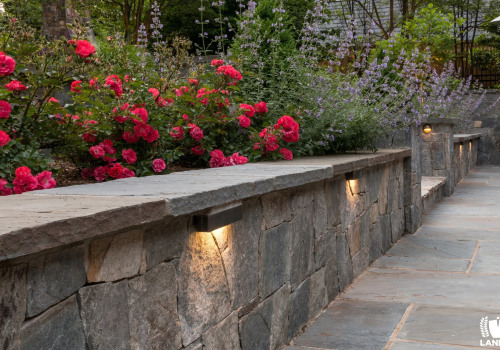Hard landscaping is one of the most physically demanding types of landscaping because the materials used are quite heavy. During gardening projects, you may find yourself lifting concrete blocks, dragging gravel, or hammering support posts. Keep in mind that not all landscaping companies offer landscaping services. Landscaping is hard work on several levels, but its rewards can make the effort worthwhile.
Physical appearance can be exhausting, especially for the less physically fit. However, there are aspects of design, accounting and other business facets to this line of work that can compensate for or even replace the physical aspect. It's a lot of hard work and you have to be OK, spending a lot of cash for tools and material, and expect your client to get your money back quickly. In most cases, smaller garden jobs, such as basic maintenance, require very little physical work.
However, being a professional landscaper can be demanding on the body. Long or challenging projects can arise from time to time, requiring immense physical strength and work. Hardscaping is not the easiest thing for companies. It's physically demanding, seasonal ups and downs can wreak havoc on cash flow, and burnout can spread easily.
You could have chosen to live in an office chair or have taken an easier career path that wouldn't have come close to offering the kind of job satisfaction you get most days of the year. This serves as a refresher, a reminder of things to keep in mind when you feel stuck in the weeds, behind schedule, or over budget. It's a push on something you knew when you got into this business. It's about how the most difficult challenges for any craftsman tend to be the most rewarding.
It involves working in the sun and, most of the time, on your knees, with dirt in one hand and sweat dripping down both eyebrows. It also requires creativity, dedication, persistence and love for plants and the earth. However, working on hardscape projects is a different story. Installing hardscaping can be a very difficult job due to the differences between softscaping projects and hardscaping projects.
Even in the best weather conditions, working on harsh landscape projects can be extremely difficult because rain, drainage, and even the roots of stubborn trees can have a negative effect on the desired outcome. That's why most homeowners choose to complete tough gardening projects during favorable weather, usually in the spring, fall, or sometimes even during mild summer seasons. It is better to look for companies capable of building harsh landscapes than to say goodbye to the dream of a backyard oasis. While some of these items may require occasional touch-up or paint work, hard landscaping is rarely an everyday task once the features are installed.
Commonly used garden materials include concrete, brick, stone, wood, and metal; look, things that are difficult, such as raising your children early on a Saturday during summer vacation. Not much if you use a compact track loader, which can be a hard work contractor's best friend before, during and after a project. Growing plants in and around water sources or slate walkways is a great way to integrate the harsh landscape with the soft landscape in the same element. The hard landscape is an essential part of the landscape because it is able to provide definition and organization to natural areas and landscape characteristics.
The elements of hard landscaping can also guide people walking in areas with spaces, such as paths, that can lead visitors through different areas of gentle landscaping. Many harsh environment projects are too physically demanding to complete with manual labor alone and require industry-specific heavy lifting equipment. Physical landscaping eases frustration for homeowners who lament that their family doesn't spend enough time outdoors, who want to add more value to their property, or who want their sloping landscape to become something more practical. Cartwright agrees that the tracks are ideal for landscaping and hard landscaping when minimal soil disturbance is essential.
A hard terrain contractor would also need a good set of forks to transport pallets of pavers and other materials. The degree of difficulty for both soft and hard landscape work depends to a large extent on the scale of the work in question. With the right landscape designer, combining hard and soft landscapes is the most effective way to turn your backyard into a getaway at home. .
.








